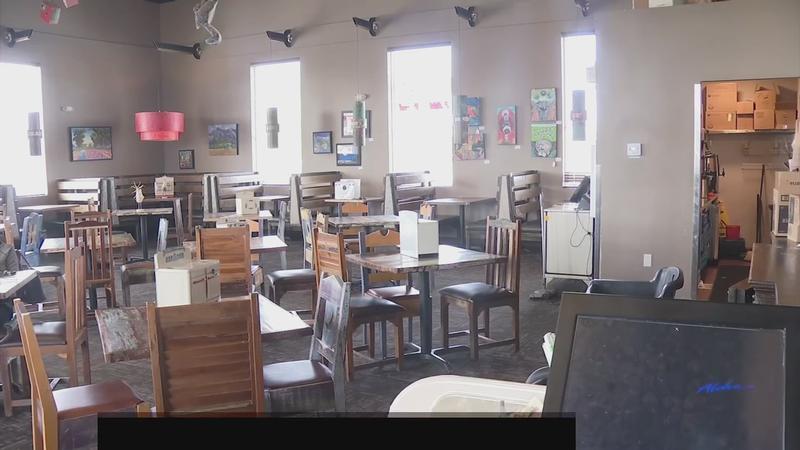Worker shortage causes problems for New Mexico businesses
[anvplayer video=”5027306″ station=”998127″]
ALBUQUERQUE, N.M.- New Mexico has quite a contradiction on its hands. It has one of the highest unemployment rates in the country, and, at the same time, a worker shortage.
As COVID restrictions loosen and businesses try to get back to normal, the shortage is certain to delay those efforts.
KOB 4 spent time looking at a few different important industries in the state to see just how bad the problem has gotten and found that it’s not just affecting entry-level jobs. The problem is reaching areas that may be unexpected.
HOSPITALITY
Range Café in Albuquerque on Rio Grande would typically be packed for lunch, but the last few weeks, it hasn’t been. After it was forced to close, then allowed to open again, then closed, then open again — COVID has taken its toll.

Owner Matt DiGregory is frustrated that he has yet another problem on his hands.
“Customers come in our restaurants and they see empty tables, and they say, ‘Why can’t I sit there?’ Well, we don’t have the bodies to handle it,” he said.
He couldn’t even go up to 100% capacity indoors if he wanted to. He still needs 100 more workers across his locations. In his three decades doing this, he’s never offered a signing bonus — until now.
“There’s just nobody to come work. It’s rampant. We get a lot of people who’ve come and applied and we can’t get a hold of them, their numbers aren’t valid. It’s just a constant battle,” DiGregory said.
DiGregory believes the problem could cause more restaurants to close this summer instead of more of them expanding.
“It’s a knife edge right now. We’re one more disaster away from going out,” he said.
He thinks the restaurant business may be changed forever, saying paying staff more and doing more with less will be the norm — if he can even stay open.
FARMING
In rural Socorro County, there’s something missing at Glen Duggins’ chile farm — the workers.
This is his 37th year walking down his rows of crops, and now, he’s wondering why he’s had fewer than half the number of workers he needs.
“Nobody’s working,” he said.
This past fall, just 30% of his chiles were picked. The rest were left out to rot, costing him about $300,000.
Chiles will begin popping out of the ground soon. The work that needs to be done right now is crucial to their survival.
“It’s heartbreaking,” Duggins said. “If you want the stuff on the grocery shelf, it took a lot of hands to get it there.”
People who think they are unemployable may have some new opportunities.
“Maybe they got a tattoo somewhere somebody don’t like or something like that, or maybe they had trouble — who knows what, but it’s a perfect time for those boys to come in and grab these jobs while those other boys are sleeping on the couch.”
He said he’d hire them “in a heartbeat.”
Between the worker shortage and the drought, chile farmers don’t know how much of their crop they’ll be able to harvest this year.
CONSTRUCTION
At a construction site, at the Mesa Del Sol neighborhood in Southeast Albuquerque, construction continues.
Companies were able to keep working during the pandemic, so people might think the industry should be good-to-go now — but there aren’t enough workers in this industry either, and that means there are delays.
“The biggest holdback is in build time. Our cycle times have almost doubled over the last year and a half. We just can’t get things done in a timely manner,” said Jenice Eades, Director of Operations at Westway Homes.
This work pays well, but those who keep an eye on the industry, like John Garcia, have discovered that even with a red-hot housing market, a lack of workers is holding developers back.
“This is the biggest demand for housing that we’ve ever seen at least since the 2008 recession,” said Garcia, who’s the Vice President of the Home Builders Association of Central New Mexico.
Add in that other trades like electricians are low on numbers, and there’s a material shortage because of the pandemic, and Garcia believes the problems will persist – delaying more growth in our state.
ANALYSIS
Analysts say the problem is not going anywhere any time soon.
The University of New Mexico Bureau of Business and Economic Research team (UNM BBER) says the state is lagging behind the recovery process of most of the rest of the country, and a full recovery may not arrive until late 2023.
Director Mo O’Donnell says, compared to other states, we’re more reliant on the leisure and hospitality industry, which is one of the areas the pandemic hit the hardest.
Thursday at 10 p.m., KOB 4 is diving into the root causes of the worker shortage problem.